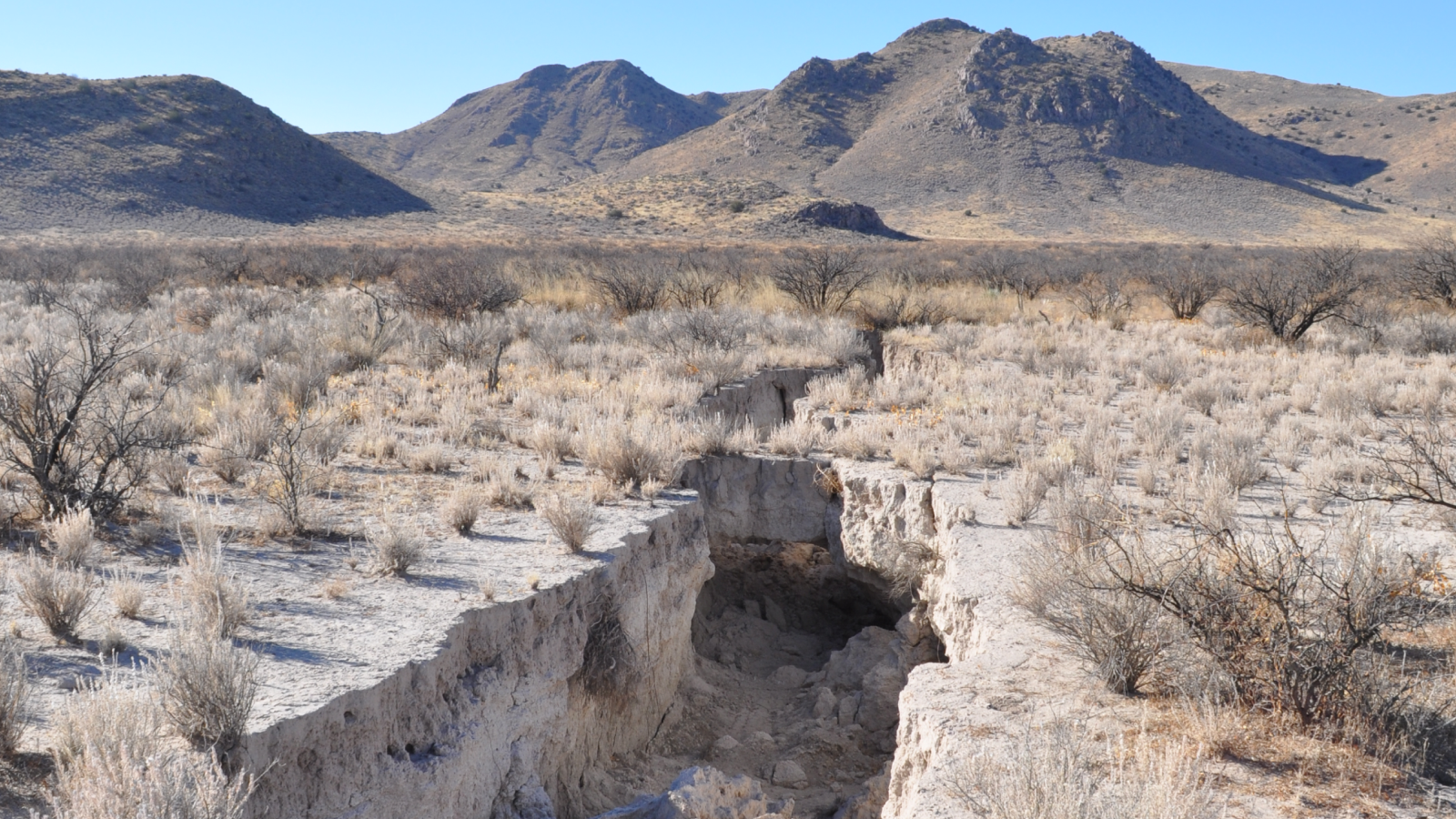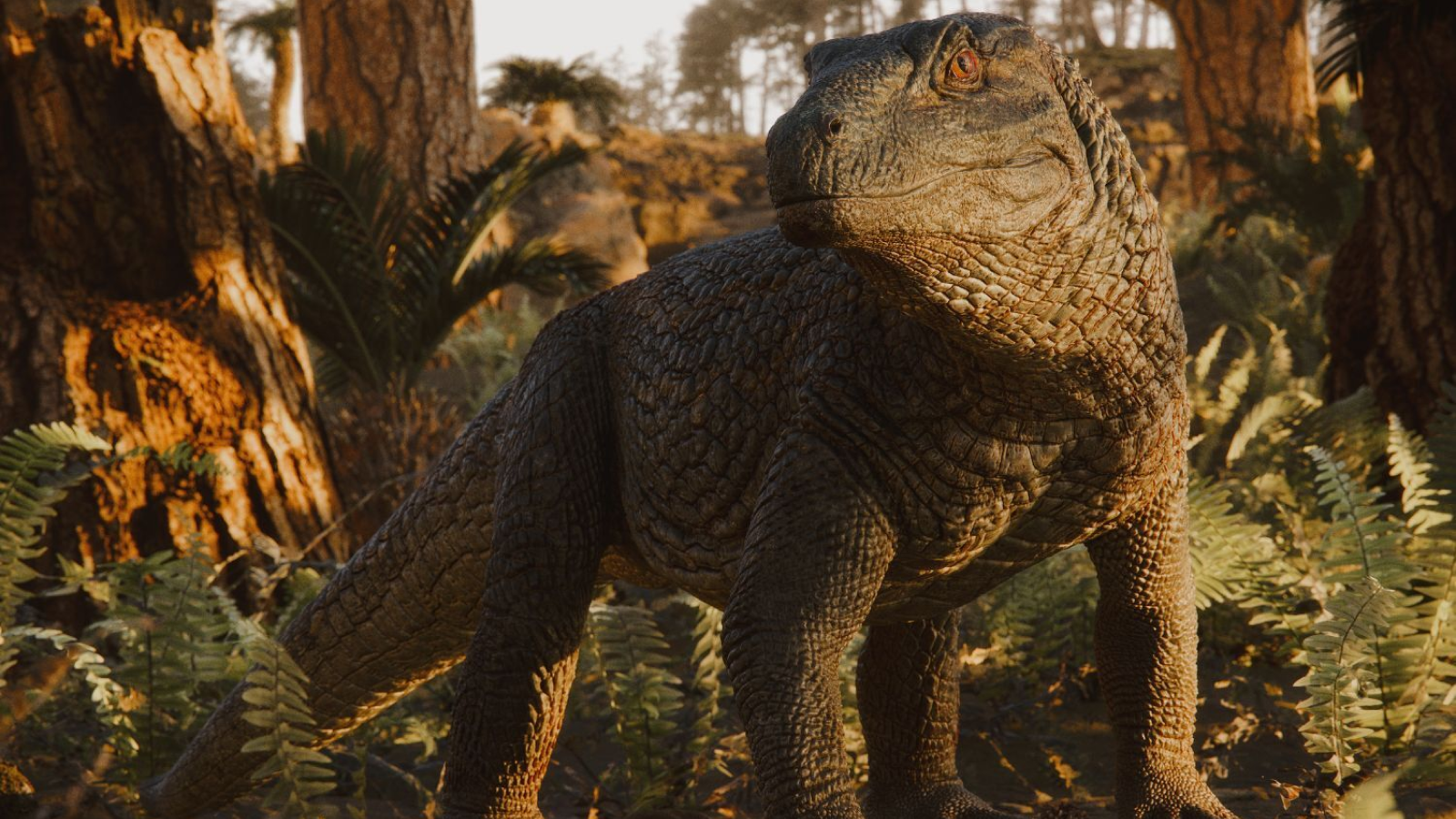Parts of Arizona are being sucked dry, with areas of land sinking 6 inches per year, satellite data reveals
Groundwater extraction has caused parts of the Willcox Basin to subside by up to 12 feet since the 1950s. New research reveals that some areas sunk by 3 feet in just 4 years.

Satellite data reveals that some areas in Arizona’s Willcox Basin are sinking more than 6 inches (15 centimeters) per year — the fastest rate of subsidence in the state.
This sinking is the result of intensive groundwater extraction to support agriculture in the region, which lowers the water table in the basin, taking the land surface down with it. Past research has shown that since the mid-20th century, parts of the basin have sunk by up to 12 feet (3.6 meters).
The extraction and subsidence have caused wells to run dry and cracks to open up in the ground. The findings were presented Oct. 20 at The Geological Society of America Connects 2025 in San Antonio.
Groundwater in the basin fills the spaces between dust and dirt particles below the surface. When this groundwater is removed, the spaces it once filled collapse because the sediment can't support its own weight. Once the spaces that used to hold water collapse, the change is permanent, and the basin loses its ability to replenish its groundwater.
"Over time, those pore spaces that were once being held open by water pressure start to collapse," Brian Conway, a geophysicist at the Arizona Department of Water Resources who was not involved in the research, said in a statement. "That causes the overlying surface to sink because of the compaction that's happening in the subsurface."
In the new research, Danielle Smilovsky, a researcher at the Conrad Blucher Institute at Texas A&M University-Corpus Christi, used a satellite-based technique known as interferometric synthetic aperture radar (InSAR) to measure changes to Willcox Basin's surface height between 2017 and 2021. InSAR measures the distance between a satellite orbiting Earth and a point on the planet's surface. After averaging several measurements that have been taken in sequence, scientists can detect small changes in surface elevation over time.
The research revealed that some parts of Arizona sank nearly 3 feet (1 m) during the study period.
Get the world’s most fascinating discoveries delivered straight to your inbox.
Even heavy rains in 2022 and early 2023 weren't enough to stop the sinking. Though higher-than-usual precipitation and snowmelt temporarily boosted groundwater levels in the basin, the land kept sinking. In some areas, it even sped up. This suggests that letting the groundwater naturally recharge is unlikely to keep up with extraction.
Regulating groundwater pumping could slow the sinking in the future. In 2024, policymakers declared Willcox Basin an active management area (AMA), which could limit extraction and preserve the basin's ability to store groundwater. The details of the management plan have not been finalized, but similar plans have helped manage water elsewhere in the state.
"Especially in the Phoenix and Tucson areas, groundwater levels are recovering, and we've seen subsidence rates decrease quite a bit," Conway said in the statement. "In the Tucson area, we're not even seeing subsidence anymore with the groundwater management."
Smilovsky took a more cautious long-term view. "I don't think subsidence will ever stop," she said in the statement. "But an AMA might slow it down a bit."

Skyler Ware is a freelance science journalist covering chemistry, biology, paleontology and Earth science. She was a 2023 AAAS Mass Media Science and Engineering Fellow at Science News. Her work has also appeared in Science News Explores, ZME Science and Chembites, among others. Skyler has a Ph.D. in chemistry from Caltech.
You must confirm your public display name before commenting
Please logout and then login again, you will then be prompted to enter your display name.
